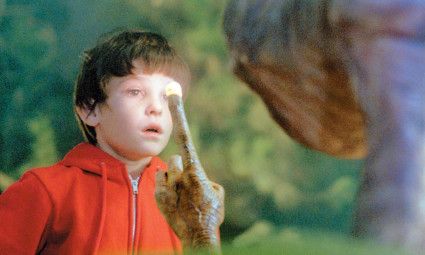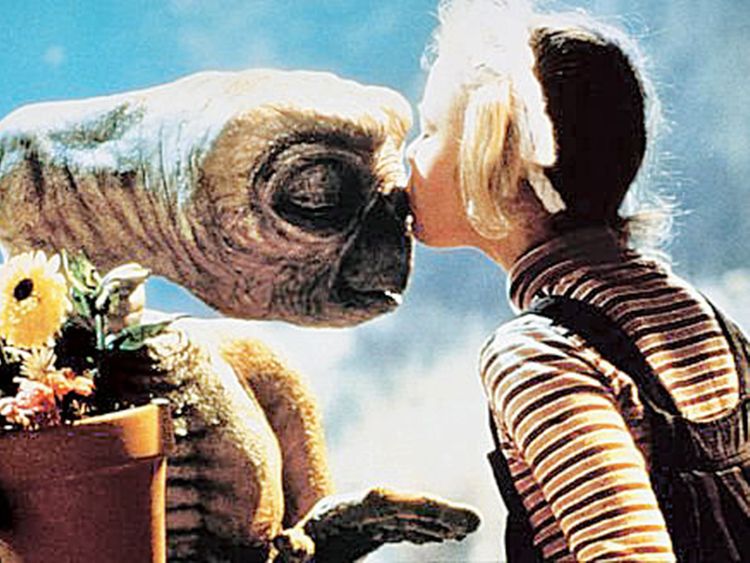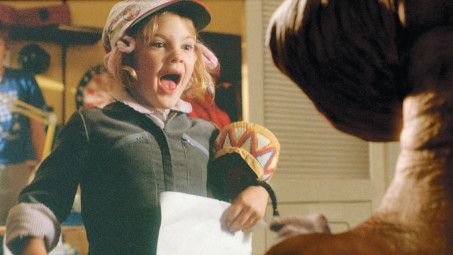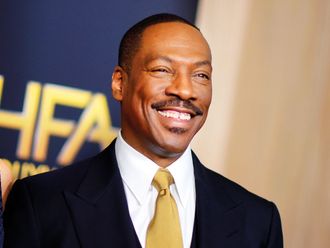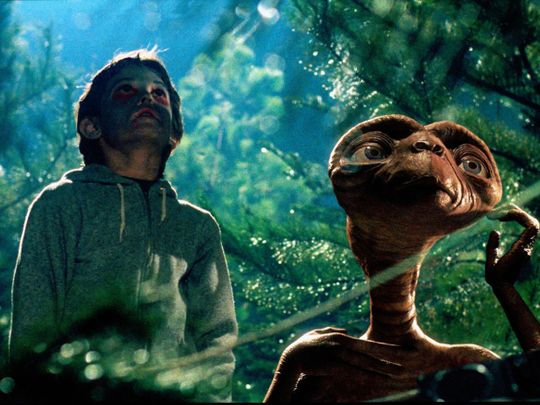
By the summer of 1982, Steven Spielberg had already made us fear the water, watch the skies and grin along to the adventure-serial thrills of his youth. But his next magic trick was maybe his most impressive yet: He made the whole world fall in love with a special effect.
‘E.T. The Extra-Terrestrial,’ which hit theatres 40 years ago this month, was more than a hit. It was a bona fide phenomenon, the kind of lightning-in-a-bottle sensation rarely seen outside the dreams of movie executives. With his suburban fairy tale about a boy who bonds with a kindred spirit from space, Spielberg achieved the platonic ideal of an all-ages smash. His movie transcended demographic appeal to completely dominate the pop-culture landscape. It was the cathartic cry everyone wanted to have in public.
For a record 16 nonconsecutive weekends, ‘E.T.’ was No. 1 at the US box office — a feat no movie would manage again. A year later, it surpassed ‘Star Wars,’ from Spielberg’s buddy George Lucas, to become the highest-grossing movie ever. It would hold that title for another decade, finally surrendering it to another blockbuster Spielberg directed for Universal, ‘Jurassic Park.’ Only a handful of films have sold more tickets than ‘E.T.,’ before or since. Adjust for inflation, and it still sits high on the list of all-time hits.
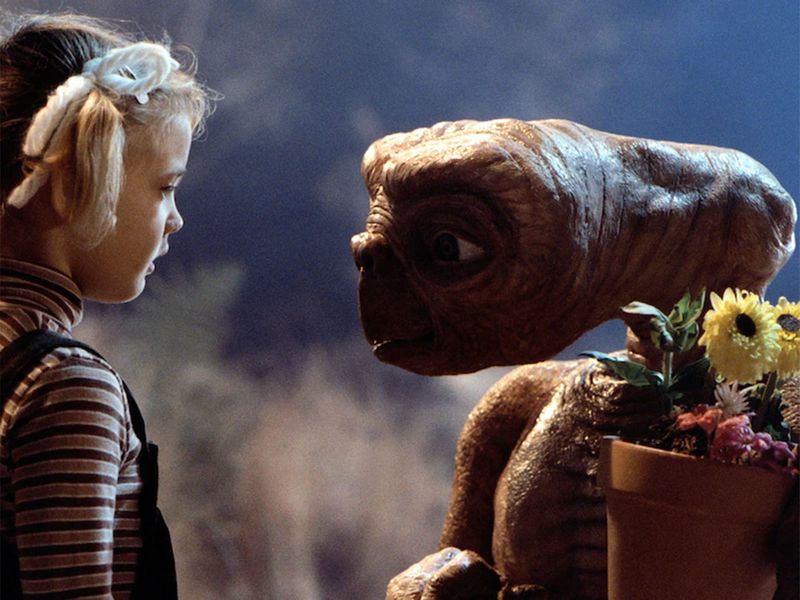
To peruse that list, or any definitive ranking of box-office successes, is to realize what an anomaly ‘E.T.’ really is. The movies surrounding it are all spectacles of one kind or another: superhero opuses, space operas, historical and biblical epics. In the modest scope of its adventure, ‘E.T.’ resembles almost none of them, not even the grand amusement-park attractions Spielberg and Lucas themselves were building every summer, together and apart. Has a gentler, more sensitive film ever made this kind of money?
Columbia Pictures famously passed on the movie. Marvin Antonowsky, who was head of marketing and research for the studio, couldn’t see any wide commercial appeal in its tale of interspecies friendship. In hindsight, this looks like one of the great blunders in Hollywood history. But there was some logic to Antonowsky’s thinking. Maybe he could sense the movie Spielberg wanted to make, a sad drama about childhood that just happened to feature an adorable alien. Who could guess audiences would line up around the block for that?
‘E.T.’ has the simplicity of a fable and the texture of ordinary American life. Much of the action is confined to a single neighbourhood in suburban Arizona, and to the cluttered home that 10-year-old Elliott (Henry Thomas) shares with his older brother, Michael (Robert MacNaughton), and younger sister, Gertie (Drew Barrymore), under the wavering supervision of their harried single mother (Dee Wallace). Visually and narratively, Spielberg keeps the perspective at a child’s level.
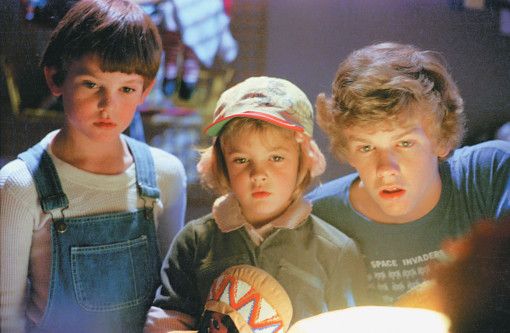
When E.T. waddles into the kids’ lives, his supernatural abilities are like an extension of their vivid imaginations. It’s the much ballyhooed magic of childhood made magically literal.
Not that the movie subscribes to the idea of adolescence as a carefree, unburdened time. By now, it’s conventional wisdom that ‘E.T.’ grew out of Spielberg’s memories of his emotionally fraught teenage years. The director modeled his title character on a real imaginary friend he came up with to cope with his parents’ divorce. As written by Melissa Mathison, who combined elements from two scrapped Spielberg projects, the film became a melancholy fantasy deeply haunted by parental absence. At heart, it’s about a broken nuclear family trying to piece itself back together.

There are a few moments of awe-inspiring big-screen wonder. The most iconic is the flight of the bicycle against the backdrop of a full moon — maybe the defining image of Spielberg’s whole career, in part because he’d repurpose it as the logo for his production company, Amblin Entertainment. But ‘E.T.’ has none of the locomotive momentum that characterised Spielberg’s big hit from the previous summer, ‘Raiders of the Lost Ark.’ The pace is more, well, ambling; this is a slice of life, not a roller-coaster ride. And it remains something of an outlier in the director’s filmography — more intimate in scale than the serious dramas he’d start making a few years later.
Of course, ‘E.T.’ sticks out especially against a canon of record-breaking testosterone fests. The only guns we see are wielded by the film’s bad guys, a faceless military presence that’s a far cry from the soldier-heroes that dominate so many of the other titles on the all-time charts. Spielberg, envisioning peaceful alien visitors again after ‘Close Encounters of the Third Kind,’ extols the opposite of a warfare mentality. Empathy is the film’s guiding philosophy. It’s introduced in the early scene of Michael scolding Elliott for not thinking of their mother’s feelings. And it’s communicated most forcefully through the connection that develops between Elliott and E.T., who come to literally share each other’s emotions.
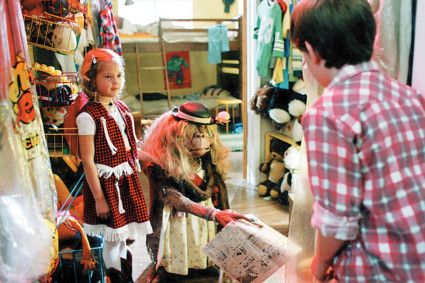
Some of ‘E.T.’s’ remarkable success has to be chalked up to E.T. himself. He remains one of the most soulful, expressive special effects ever conceived. Even if you know all the tricks Spielberg and his effects artist, Carlo Rambaldi, used to bring the little guy to life, it’s very easy to forget that you’re watching a suit augmented with animatronics. E.T. has personality and character and emotion, and he moves like a living thing. He seems genuinely alive — a compliment that can’t be paid to the various ‘E.T.’ rip-offs that arrived throughout the ‘80s, nor to so many of the CGI critters that would populate the event-movie slate in the aftermath of the practical, prosthetic effects era.
But maybe the true key to the movie’s instant success, and to the enduring popularity it’s enjoyed over the 40 years that followed, is its insight into childhood. ‘E.T.’ is one of the most perceptive films ever made about the emotional experience of being a kid. Every scene with the terrifically naturalistic child actors rings with some truth about pre-adult life. They talk like real kids, trading the occasional curse word. And they react like real kids, as when Gertie’s initial fear of E.T. gives away immediately to curiosity and a barrage of child-logic questions like “Was he wearing clothes when you found him?”
Spielberg, so often characterised as Hollywood’s Peter Pan — the hitmaker who never grew up — inherently understands how lonely and powerless you sometimes feel as a kid. That’s what ‘E.T.’ so touchingly conveys, and what’s so universally relatable about the movie. You don’t have to have been raised in the arid outskirts of Phoenix to recognise yourself in Elliott’s yearning for connection or feel a flush of triumph at the way he and his siblings come of age by accepting the responsibility that’s foisted upon them. ‘E.T.’ speaks to anyone living through the heartache and joy of childhood or to anyone who just remembers it. Which is to say, it speaks to almost everyone.



